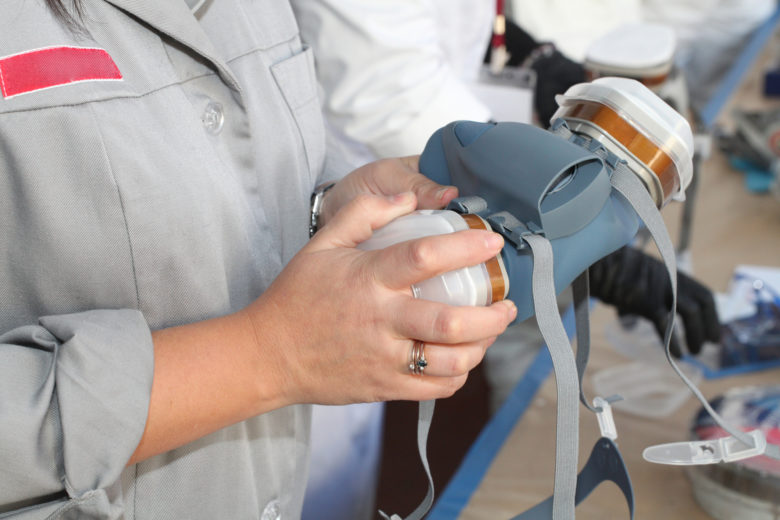There are many factors to consider when implementing a respiratory protection program at your workplace, starting with a written plan and medical evaluations, and finishing with fit testing and record keeping. EHS professionals must also ensure proper use, cleaning and maintenance of the respirators. This is vital for workers’ protection and it extends respirators’ operating life. Here are a few issues to take into account when it comes to respirator use and maintenance.
Respirator use
- The breathing air in the respirator must meet Grade D standards (ANSI/Compressed Gas Association Commodity for Air, G-7.1-1989), which can be verified by conducting an air test.
- Using CO (carbon monoxide) monitors can help maintain the Grade D breathing air required. When working with an oil-lubricated compressor, use carbon monoxide alarms (or high-temperature alarms) to ensure the respirator wearer’s safety. However, the sensors must be calibrated (depending on the model) and should ideally be re-calibrated on a monthly basis.
- Mark containers of breathing gas clearly and in accordance with NIOSH requirements.
- The compressor supplying air must be equipped with safety devices and alarms.
- Employees are responsible for wearing the appropriate respirator for the appropriate hazard and they are required to comply with the respiratory protection program.
- Workers mustn’t alter or remove the respirator when they are in a hazardous atmosphere, even if the respirator is uncomfortable.
- Safety personnel must monitor work conditions, changes in operating procedures, temperature, air movement, humidity and other factors because they may influence the concentration of hazardous substances in the work area.
- In situations with an atmosphere that is immediately dangerous to life or health, at least one employee should be located outside the dangerous environment and maintain communications (visual, voice, etc.) with employees in the dangerous atmosphere.
Cleaning and maintenance
Cleaning and proper maintenance are an essential component of keeping respirators functional and safe. There are several basic things that must be done:
- Respirators should be stored in a position that allows them to retain their natural configuration (and prevent the deformation of rubber or plastic pieces) and in conditions that protect them against anything that might affect their performance (such as dust, sunlight, extreme temperatures and excessive moisture).
- Inspect all respirators (include checking the tightness of the connections) for wear and tear before and after each use. Remember that rubber and plastic can deteriorate easily. A respirator must be in good condition to allow for continued use.
- All self-contained breathing apparatuses (SCBA) must be inspected at least monthly to confirm that air cylinders are fully charged and that the regulator and warning devices are functioning properly. Companies are required to keep records of inspection dates and results.
- Replace chemical cartridges, gas mask canisters and mechanical filters as required by the manufacturer.
- Respirators must be cleaned with a detergent and immersed in sanitizing solution to disinfect them when necessary (there are cleaner-sanitizers available on the market that clean and sanitize the respirator). Don’t use solutions that are too strong as they can damage the rubber and plastic parts of the equipment. When in doubt, follow the manufacturer’s recommendations.
- Emergency-use respirators must be cleaned and disinfected after each use.
- Repairs are not to be performed by the user or any other person unless they have relevant experience. Only parts specifically designed for the respirator are to be used for repairs. Modifying respirators is not permitted unless the pieces are included in the NIOSH Approval Label supplied with each approved respirator.
The list above is not exhaustive. But it provides an idea of the factors that need to be addressed in a workplace respiratory protection plan. It’s also important to use the right respirators for the job, for the amount of oxygen present, and for the contaminants, their toxicity and concentration. Additionally, workers need to be able to see clearly what they’re doing and be able to communicate through the respirator.
To protect workers, companies not only have to create a good and functional plan but should also ensure its implementation, purchase the right equipment and monitor its correct use and maintenance. It’s a big responsibility, but when respirators are required, workers’ health and even lives are on the line, so it’s critical to approach this with all due diligence.

